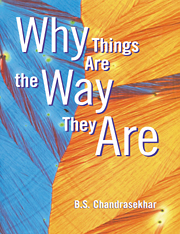Book contents
- Frontmatter
- Contents
- PREFACE
- I INTRODUCTION
- II CRYSTALS
- III PARTICLES AND WAVES
- IV THE ATOM
- V STATISTICAL PHYSICS
- VI THE QUANTUM MECHANICAL CRYSTAL
- VII COPPER WIRES AND GLASS RODS
- VIII SILVER SPOONS AND PLASTIC SPOONS
- IX GLASS PANES AND ALUMINIUM FOILS
- X ELECTRIC BULBS AND INSULATED CABLES
- XI MAGNETS
- XII SUPERCONDUCTORS
- XIII CONCLUSION
- GLOSSARY
- INDEX
V - STATISTICAL PHYSICS
Published online by Cambridge University Press: 20 October 2009
- Frontmatter
- Contents
- PREFACE
- I INTRODUCTION
- II CRYSTALS
- III PARTICLES AND WAVES
- IV THE ATOM
- V STATISTICAL PHYSICS
- VI THE QUANTUM MECHANICAL CRYSTAL
- VII COPPER WIRES AND GLASS RODS
- VIII SILVER SPOONS AND PLASTIC SPOONS
- IX GLASS PANES AND ALUMINIUM FOILS
- X ELECTRIC BULBS AND INSULATED CABLES
- XI MAGNETS
- XII SUPERCONDUCTORS
- XIII CONCLUSION
- GLOSSARY
- INDEX
Summary
Introduction
Any object that we see around us, even though it may be very small like a grain of sand or a pin, consists of a very large number of atoms, about 1021. When the atoms are relatively far apart, as in a gas, the electronic structure, meaning the wave functions, of each atom is practically unaffected by the presence of the other atoms. When the atoms come close together in a solid, the wave functions become different from what they were for the isolated atoms. In crystals of metallic elements like silver and copper this change is such that the electrons in the highest energy state of the isolated atom are no longer bound to stay near the corresponding nucleus, but are free to wander around in the whole crystal. This freeing of the outer electrons happens with each atom in the crystal. So we end up with a crystal in which a large number of electrons, 1021 or more, are wandering about. These electrons are responsible for many of the metallic properties of copper or silver: the shiny appearance and the ability to carry electric current and to conduct heat easily, for example. We shall see later how this comes about. For the present we need to find a way to describe the properties and behaviour of such large numbers of identical entities like electrons or atoms. We do this with statistics.
- Type
- Chapter
- Information
- Why Things Are the Way They Are , pp. 84 - 102Publisher: Cambridge University PressPrint publication year: 1997



